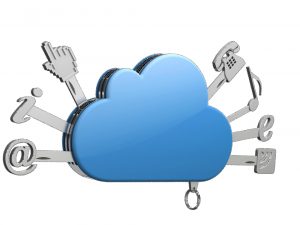TurnKey Internet Expands Data Center and Cloud Services to Colorado no comments
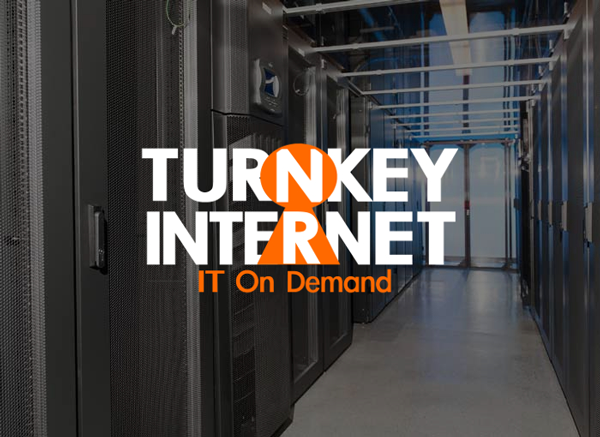
LATHAM, NEW YORK (May 18th, 2021) – Leading Data Center and Cloud Hosting Solutions provider TurnKey Internet has announced it is expanding its data center and cloud-based infrastructure into Colorado. The expansion builds on TurnKey Internet’s existing New York data center and California data center by offering additional geographically specific and redundant, high-speed dedicated servers and cloud servers from their East Coast, West Coast and Colorado facilities.
The Colorado data center, located in Colorado Springs, offers multiple transit backbone providers with fiber network redundancy as well all UPS Systems offering A+B redundant power. The data center also features a dedicated backup power generator and fuel, an advanced fire suppression system, facility wide environmental monitoring, N+1 cooling, and a low power usage effectiveness (PUE).
TurnKey Internet’s next generation Cloud platform, featuring cloud based servers with speeds up to 10Gbps, and enterprise-grade bare metal dedicated servers are now available to be provisioned in their existing data centers as well as their all new Colorado data center. Fully managed hosting solutions will also be offered from the new Colorado facility.
“Extending our Data Center and Cloud-Hosted services to Colorado matches our vision of giving customers access to a ‘turnkey’ platform that delivers unmatched value and performance,” said Adam Wills, CEO of TurnKey Internet, Inc. He continued “This expansion is an exciting step in the development of our Cloud-Hosted platform. Our clients can easily deploy and manage their Cloud infrastructure across multiple geographic locations. This provides a better experience by providing redundancy and performance increases through delivery of applications closer to the end-user.”
For more information about TurnKey Internet’s latest expansion or to speak with a Cloud Hosting Solutions expert, visit www.TurnKeyInternet.net
About TurnKey Internet
Founded in 1999, TurnKey Internet is a full-service Cloud Hosting Solutions provider with data centers in New York, Colorado, and California specializing in Infrastructure as a Service (IaaS) to clients in more than 150 countries. Services offered include Public Cloud, Private Cloud, Dedicated & Bare Metal Servers, Backup & Disaster Recovery, Online Storage, Web Hosting, Managed Hosting, Hybrid Solutions and Enterprise Colocation. Headquartered in New York’s Tech Valley Region, TurnKey Internet’s flagship company owned data center is SSAE-18 SOC 1 and SOC 2 certified, as well as HIPAA compliant. The facility is powered exclusively by on-site solar and hydroelectric sources to provide a 100% renewable energy footprint and in 2013 was designated as the 39th ENERGY STAR® Certified Data Center in the United States. For more information, please call (518) 618-0999 or visit www.turnkeyinternet.net
Follow Us :Share :
Top 5 Benefits of a Dedicated Server 2 comments
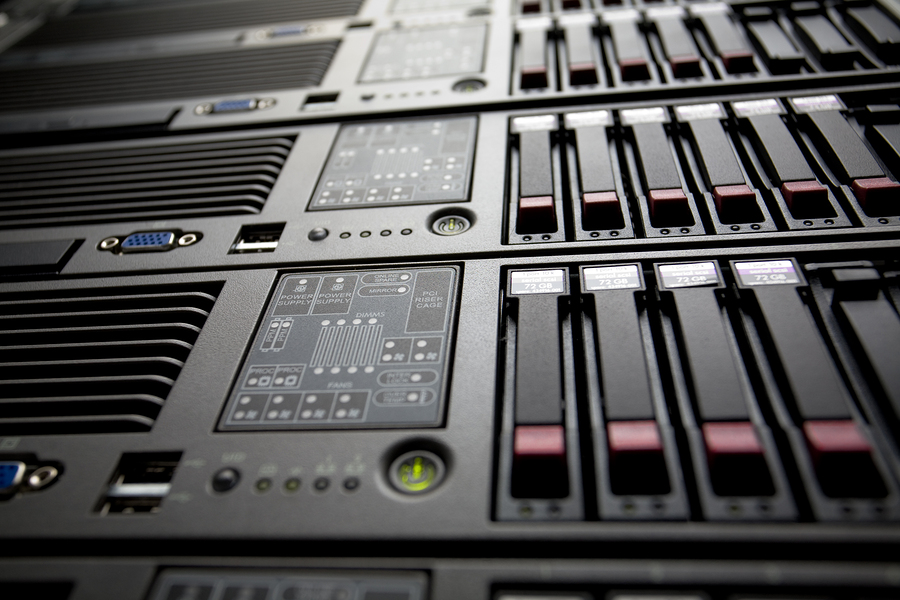
Whether you’re an online business or an individual looking for more power, flexibility, and control over your web hosting solution, the answer for you may be a dedicated server. With a dedicated server, your business has exclusive use of that server’s resources. You also have the flexibility of customizing the server to meet your individual performance and security requirements. To fully understand why a dedicated server is the better solution for you or your business, let’s take a look at the top five benefits they provide.
1. Exclusive Resources
When using a dedicated server, every bit of power, storage, and bandwidth is exclusive to you and no one else. Not only will this give your business more room to work with and expand, it will also prevent issues with your site caused by other websites. For example, if you’re site is hosted on a shared server where there is another website that is being attacked or hogging up resources, this can affect the performance of your company’s site.
2. Dedicated IP Address
Each dedicated server comes with its own dedicated IP address. With shared hosting, your site may be sharing an IP address with multiple websites. If your website happens to share an IP with a site that spams or contains malware, this can cause multiple problems. Your website can end up getting blocked, your email rejected as spam, even your search results can be affected. Another thing to consider is whether or not you’ll be running an e-commerce or selling things on your site. If so, you will need to have an SSL for your site, which in turn requires a unique dedicated IP.
3. Customization
A dedicated server allows your business to customize the hardware and software based on your company’s unique needs. Things like CPU, Memory, Hard Drive, even the speed of the server’s network port, can all be customized and upgraded on dedicated servers. With shared hosting, you are limited to the software already installed on the server, and sometimes it may lack a requirement or feature your business needs. But with a dedicated server, you have full flexibility over which software the server runs, even down to the Operating System.
4. Better Access
Another downside of shared hosting is the lack of Administrative or root access to the server. This limitation affects what software you can install as well as the settings and options that you can configure on the server. This can greatly impact the potential of what you are able to do with your website. Another advantage of administrative/root access is the ability to better monitor and troubleshoot your website, with full access to the server’s logs.
5. Better Security
With a dedicated server, you have exclusive access and can dictate who shares that access. This allows you to better secure the contents on your server and alleviates the concerns of sharing a server with malicious or careless users. Also because you have full control over the server, you can better enhance and customize its security based on your unique needs.
Now if you’re worried that you’re not tech savvy enough to run your own dedicated server, consider the option of going with a Managed Dedicated Server solution, which will provide many additional benefits on top of what’s listed above. Also if cost is a concern, check out our latest Best Value Dedicated Servers. There are countless other advantages to using a dedicated server, however the 5 above are some of the most notable. So before you decide to host your website on a shared server, consider the added flexibility, reliability, and performance that only a dedicated server can provide.
For more information on Dedicated Servers, visit TurnKeyInternet.net or call 877-539-4638 to speak with our 5 Star rated Cloud Hosting experts.
Follow Us :Share :
4 Ways to Protect Your Business From Email Phishing no comments

Phishing is the process of posing as another person or as a company to deceive people into giving personal or confidential information away, and criminals have been known to use emails as a way to reach their goals. Knowing about the threat is not always enough when your task is to keep yourself and your business safe, and the attack can occur at any time.
An employee will be checking their email as they would on any other day. Suddenly, the employee spots an email from the bank that asks the user to log in to the account to confirm a recent transaction. But the email was not from the bank, and the user’s information is now in the hands of an identity thief. If you don’t want to encounter this situation, then the following 4 tips will help.
1. Don’t Share Sensitive Information Through Email
In a common phishing attack, a criminal will pretend to be someone whom you trust to steal sensitive data. The email could appear as though it had been sent by a friend, boss or business contact, and you might be asked for your account information or pin number. But no credible business will request sensitive data in an email, so the request should be your first red flag.
Rather than sending personal details in an email, pick up your phone and call the company or the individual who requested the information. Although this step might seem a little time-consuming, it can save you from a lot of trouble.
2. Manually Navigate to Web Addresses
Long before sending you a fraudulent email, experienced criminals will put in the effort to clone the website of a bank or business. They will then send an email posing as your bank or another trusted entity, and you will be encouraged to click a link that will take you to a malicious website.
Although the content, logo and other details might appear identical to the real thing, any information that you send will be exposed. Avoiding this type of attack is not difficult. Simply open a separate web browser and manually navigate to the website that you intend to visit.
3. Look for Spelling Errors
Keep in mind that phishing attacks can come from any location on the planet, so a lot of fake emails are sent by those who don’t speak English as their first language. When someone from another country sends a fraudulent email, the message will often contain obvious spelling errors. Some people dismiss the spelling errors that they find, but they will likely have their personal information stolen as a result. Customer service agents can make mistakes, but using caution is the best way to avoid becoming a victim.
Also, even criminals who speak English fluently can make mistakes when typing an email. If you notice anything that seems odd, call the company or person from whom the email appears to originate and ask for verification. If the email is not legitimate, report it as spam and block the domain.
4. Don’t Trust Attachments
Downloading and running email attachments is a good way to get a virus or to have other malicious software installed on your device. In the past, hackers would use screen savers and free games to infect their victims, but hackers can even use Word and Excel documents to inflict damage. After a computer is infected, the malicious code will sometimes automatically email itself to everyone in the victim’s address book. If you want to avoid this problem, never download an attachment that you were not expecting.
Having your identity stolen can destroy your credit score, and some people are forced to wait years before they can reverse the damage. Nobody should overlook the threat of phishing, and you can never eliminate the risk entirely. But you can significantly reduce the odds of having your personal or business information exposed by keeping safety at the front of your mind. Protecting yourself and your business will require some time and effort, but safeguarding your information is always easier than trying to pick up the pieces after an incident occurs. Those who focus on security when communicating online will follow these tips, but they will also use common sense to detect the signs of suspicious activity. Follow Us : ![]()
![]()
![]()
![]()
![]()
Share : ![]()
![]()
![]()
![]()
![]()
What is Cloud Disaster Recovery? no comments
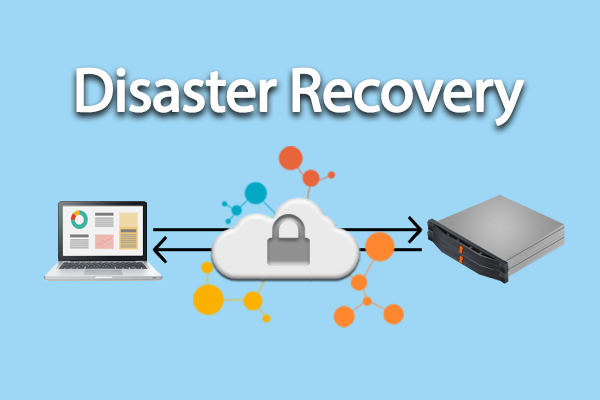
The cloud has changed the way that many businesses handle disaster recovery and business continuity planning. One of the biggest changes the cloud has brought to the business world is the ability for smaller organizations to use the type of data recovery systems that historically were only available to large organizations.
Now, any business’ disaster recovery plan can include complete data backups that are off-site and redundant. Prior to cloud backup systems, businesses were often limited to storing data backups on-site. If a fire broke out or servers were damaged in some other way, on-site data would be lost. Off-site backups frequently required manually making copies of data and/or moving storage media to a different location before cloud computing streamlined the backup process.
The cloud allows data to be saved automatically, and many businesses are working off of cloud-based systems at all times. Another major benefit of using the cloud for backups is that many other types of data storage have significant failure rates. Tapes, in particular, were used for decades as a method of storing backup data, but it has been found that they have about a 10 percent failure rate. Cloud computing offers redundant file storage, so unlike with tapes or even hard drives that could potentially fail, data saved to the cloud is almost guaranteed to always be available. Systems can be set in place to backup data automatically, and cloud storage allows you to keep multiple copies of records with different time-stamps.
Another Disaster Recovery solution the cloud provides is Cloud Replication, which allows for the restoration of data to a virtualized server. Utilizing an off-site data center’s cloud infrastructure, data can be made available instantly, then accessed remotely from anywhere in the world over multiple, redundant, high speed networks. This removes the bottleneck of local internet service providers bandwidth availability, and saves potentially hours of business critical time by bypassing the need to wait for your onsite systems to restore and be back in working order.
Should a disaster occur in which your infrastructure is no longer available or accessible to be restored, the need to purchase new hardware can be completely eliminated. Utilizing a Cloud Replication solution can have your business back online in minutes, not days. Employees can continue their work from home, remotely accessing images of their old workstations running live in the cloud, ensuring your business does not skip a beat.
The cloud is helping businesses recover their most critical systems and data faster, while also avoiding the expensive infrastructure costs of onsite or in-office data centers. Leveraging a cloud solution is by far one of the best, most cost effective ways to protect your company and ensure business continuity when disaster strikes. Whether it be an office fire, hardware failure, employee error, or malware infection, IT disasters are inevitable. That’s why it is critical that you have a plan in place. Don’t gamble with your company’s data, contact TurnKey Internet today and receive a free consultation of your company’s Disaster Recovery Plan.
Learn more at www.TurnKeyInternet.net/myplan Follow Us : ![]()
![]()
![]()
![]()
![]()
Share : ![]()
![]()
![]()
![]()
![]()
What is Colocation? 1 comment
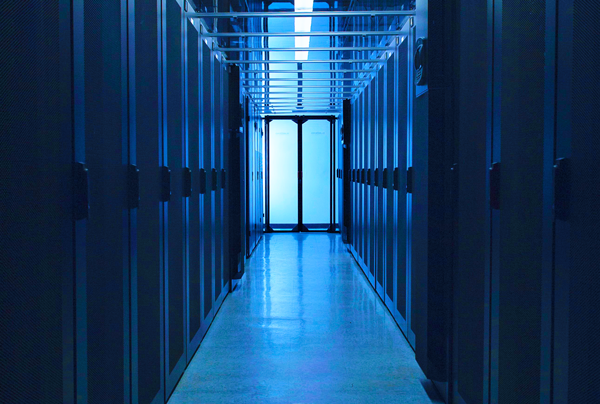
Colocation or ‘Colo’ is a solution offered by major data centers that provides businesses and organizations a place to host their servers and other IT hardware in a secure, high-tech facility. Whether it’s a small business that doesn’t want to hire an entire tech department, a large company that wants the stability and security of a data center, or somewhere in between, Colocation offers benefits to all types of businesses.
Security & Protection
Most data centers that offer colocation have high levels of physical security. Features such as security cameras, 24×7 on-site staff, individual cages or cabinets have locks, as well as biometric scanning at all access points and more! If the proper security is in place, a data center may also be SSAE-18 certified. This allows businesses to colocate their equipment and benefit from the SSAE-18 compliance already in place to avoid costly and time-consuming auditing of your company’s office or facility.
With Colocation, businesses own their equipment. Since they own the equipment, only their staff has access to it and the data it holds. Unlike typical web hosting solutions, where data may me stored on a shared server, they will be the only ones with access to their data.
Uptime
Most businesses run 24×7. Even after ‘store hours’ a business needs to be online and connected, especially if they operate an online store or website. Being down for minutes or an hour can spell disaster. Imagine an organization’s IT infrastructure down for a day or a week while the power’s down due to a storm. This disrupts potential clients from accessing their servers! In a colocation facility like TurnKey Internet’s Data Center, your company’s IT infrastructure is housed in our redundant, high-speed Internet-connected facility, with continuous power provided by industrial UPS battery systems and on-site diesel generators for emergency backups.
Room To Grow
In a typical office IT environment, if a company quickly needs to increase bandwidth or add physical space to the office, they could wait weeks or even months. When their infrastructure is located in a colocation facility, they can provide huge amounts of additional bandwidth within minutes or hours. A typical data center can have a bandwidth capacity 10,000 times that of a typical office cable Internet connection.
Cost Savings
Businesses that build their own on-site IT infrastructure can spend hundreds of thousands of dollars, if not millions, to have the same bandwidth capabilities and enterprise grade power and cooling systems featured at a colocation facility. Fiber optic lines, connecting to major internet hubs across the world are not purchased for pennies either! Add in redundancy to their office, and businesses are paying tens of thousands of dollars a year. On the other hand, if they instead chose to utilize a colocation facility, it might have cost them less than $100 a month.
Colocation is the ideal solution for companies, service providers, small businesses and IT resellers who want a stable environment in which to completely control their assets. It provides complete control of your hardware, software and networking to match your needs without worrying about the supporting infrastructure. By colocating with TurnKey Internet, you are able to focus on your business and not on office networking, power or server issues that plague localized installations and office infrastructure. We provide redundant networking, power and cooling to ensure your services remain online and accessible at all time.
To learn more and receive a FREE consultation, visit www.TurnKeyInternet.net/myplan Follow Us : ![]()
![]()
![]()
![]()
![]()
Share : ![]()
![]()
![]()
![]()
![]()
What is a Data Center? (A Basic Guide) no comments
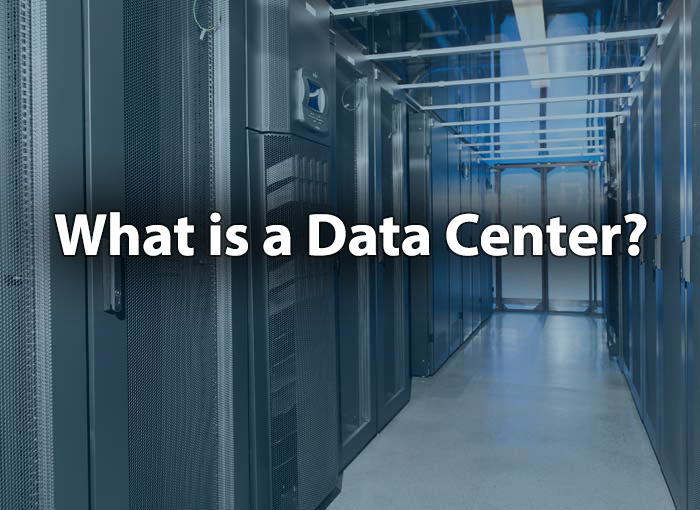
You don’t have to be a tech startup to benefit from ready access to your data. Digital information is becoming increasingly important to companies of all sizes in all kinds of industries. Data centers let you store, modify, access and back up your data safely, reliably and economically. Here’s how they work and why they might be right for your organization.
Data Center Basics
Data centers are dedicated physical facilities that house the networked computer equipment that contains your information. Although their design varies, the majority include some of the following common elements:
Servers
Servers are computers made to be constantly running. Unlike your personal desktop or laptop, most servers are headless, meaning that they lack monitors, keyboards and other interfaces that facilitate direct human interaction. Instead, they connect to other servers and clients via local network and internet connections. For instance, when you access your favorite websites, you’re really sending a request to a remote server that responds with the information needed to display the pages you want.
Racks
Servers are made to be compact, and racks let you stack armies of them in a small space. Racks may house their own cooling devices and monitoring components. Some even include custom components, vibration absorbing materials and soundproofing elements. Rack units come in a number of standardized sizes made for various equipment. Their design makes it possible to mount shared power units, route cables neatly and install servers in a fashion that permits free air flow.
Network Infrastructure
Linking servers together requires more than just network cables. Like the home or office networks that you might be familiar with, these systems require switches, routers, firewalls and other connecting hardware that controls the flow of data and permits secure external access between a remote client and a server. Most data centers feature redundant network connections from multiple Internet Service Providers (ISPs), allowing them to have a bandwidth capacity of more than 10,000x that of a typical office cable internet connection. This redundancy also allows some data centers the ability to offer Network Uptime Guarantees or Service Level Agreements (SLA) to their clients.
Environmental Systems
Even though racks and servers commonly have their own local cooling fans and ducts, all of the heat that they cast off has to end up somewhere. Cooling systems ensure that your data center doesn’t turn into a hot sauna by circulating air inside the facility, controlling moisture levels and exchanging heat using an air conditioner or similar device. These systems must be capable of constantly running since servers generate significant heat even when they’re not chugging along at full steam. Temperature management is one of the most important aspects of operating a data center. Proper cooling saves expensive equipment from overheating, shutting down unexpectedly or sustaining permanent damage.
Performance Monitoring Equipment
How do you know when your office server is running smoothly? Although checking your website is one option, it’s not very effective at stopping problems in advance. Performance monitoring devices featured in data centers let engineers observe the conditions in their facilities to ensure that everything is going according to plan. Tracking different variables, such as temperatures, power usage, and network activity give data centers deeper insights into the overall performance of your company’s servers, allowing them to take specific actions in case of problematic conditions.
Power Infrastructure
Most data centers feature power distribution units, or PDUs, and components like uninterruptible power supplies, or UPS, that continue providing electricity in case of blackouts. Data centers will also incorporate backup generators to ensure continuous power is delivered to your IT equipment in the event of a disaster which wipes out local utility power. Some data centers will even take an environmentally-conscious approach by leveraging green, clean energy via solar and hydro electric power.
Why Are Data Centers the Standard?
Data centers have come to dominate a landscape once populated with in-office server racks and general-purpose computer networks. While these elements still play roles in many business models and processes, their fall from prominence reflects a number of advantages that only data centers can claim.
Because they’re specifically designed to store servers and keep them running safely even if your office network goes down, professional data centers offer benefits such as:
- High availability, or the tendency for your website or company data to be accessible at all times
- Robust servers and networking hardware that can easily be scaled up or down
- Physical security brought about by the face that many facilities control who comes and goes
- Network security that meets modern and certified standards
- Faster network connections that provide quicker backups and more pleasant user experiences
- Fire, flood, and other forms of disaster recovery and mitigation for business continuity
- 24/7/365 IT Support Staff
Could Your Organization Benefit From a Data Center?
It may seem tempting to do everything in-house, especially if you’ve already invested in your own servers or a computer room. Although some organizations don’t need dedicated data centers, many are leveraging the advantages to propel their enterprises forward in a business ecosystem that’s only growing more digitized.
Do you want your site to be accessible at any time from any location in the world? Are you prepared to replace your critical network infrastructure in the event of a disaster? How much are you spending on facility power? While there’s definitely a call for keeping some computing hardware local and maintaining your own IT staff, data centers make it possible to reduce operating overhead and increase reliability in these and many other areas.
For organizations that depend on data to power their decision-making, connect users and get work done, the choice is clear. To learn more about incorporating data centers into your business model, contact TurnKey Internet today!
3 Ways to Backup Your Server in the Cloud no comments
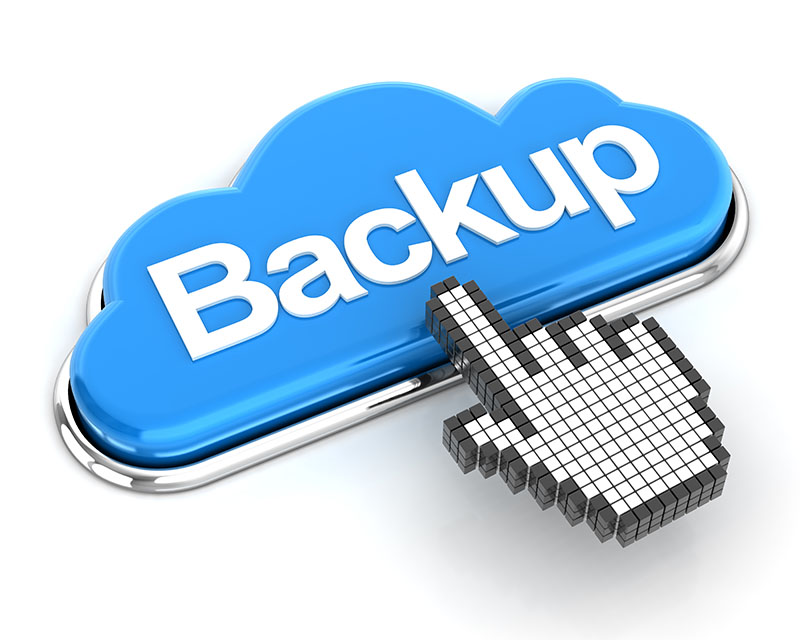 When protecting data on your server is your No. 1 goal, utilizing a backup solution is a must. However, if all of your files and backups are stored on the same server, you risk losing everything if that server gets destroyed or compromised. The good news is that you can combat this problem by utilizing the Cloud. There are multiple methods that exist for creating server backups in the cloud, but today we are going to focus on three of the most popular ways.
When protecting data on your server is your No. 1 goal, utilizing a backup solution is a must. However, if all of your files and backups are stored on the same server, you risk losing everything if that server gets destroyed or compromised. The good news is that you can combat this problem by utilizing the Cloud. There are multiple methods that exist for creating server backups in the cloud, but today we are going to focus on three of the most popular ways.
1. Bare Metal Backups
In disaster recovery, a bare metal restore is the process of reformatting a computer from scratch after a catastrophic failure. This process entails reinstalling the operating system, applications and if possible, restoring data and all settings. Bare metal backups allow you to restore to a brand-new, un-configured server as the backup includes all information to setup the machine and move the data over. This results in a ready to go backup server.
At a deeper level, bare metal backups work by taking a “snapshot” of the server. This snapshot includes every file and folder that exists on the server, including all hidden files and directories. This snapshot is then pushed to the cloud, where the entire image can be deployed at a moment’s notice. If you have a Windows server or even a Linux server, bare metal backups will copy the entire operating system structure. Usually, these backup images are the rather large as they are an exact replica of your running server.
For example, let’s say that you have a full power outage at your company. Upon the power returning, you realize that your main hosting server has lost all data. It can’t find the boot record to load the operating system and all files have been removed. With a bare metal backup solution, you simply login to your bare metal software, select the server you want to restore, and viola. The operating system is re-installed with all applications. It’s as if the major system failure never occurred!
2. Cloud Backups
A cloud backup is a piece of software that takes a snapshot of your server and then stores the backup in the cloud. What exactly do I mean by the cloud? The cloud is a piece of software that is stored off-site that can be accessed from any location. Cloud backups allow for greater flexibitily then a local disk or tape backup. A disk backup or tape backup has the limitation of only being able to access the data locally. This could mean data is being stored on a different server that is stored in your local office. In order to access the backup, you would have to drive into your office, connect the two servers and then migrate the data over.
Do you already see the disadvantage to this type of local system? What if you’re traveling and have a disaster and need to restore your data? How will you do it if your business only keeps local backups? This is where a cloud backup comes into play. Since the backup is stored off-site and can be access via an internet connection, you can restore your data from virtually anywhere in the world. This allows for greater flexibility in your backup solution. Also, another disadvantage to local backups is the size or space requirements for the backups. Say you have 1TB of data you need backed up, but you only have 500GB worth of space. What will you do? More than likely, you would just add a new device to your backup software. This may be an additional hard drive, a USB drive or maybe a network attached storage.
Well with a cloud backup, you can just increase the resources of the cloud storage to accommodate your increasing space needs. This allows for you to be able to rapidly add more space to your backup server to accommodate your increasing data space requirements. Now, in no way am I advocating that you should remove your local backup options, but instead add another layer of redundancy to your current system such as a cloud backup. Having local backups and cloud backups are a great way to maintain business continuity.
3. Virtual Server Backups
Virtualization allows for one physical server to act as several servers. This dramatically reduces computing costs and boosts efficiency. One of the main challenges with backing up virtualized servers is the need to backup the virtual server’s data as well as the main host node’s data. When I say, host node, I’m referring to the original, physical server that contains all of the virtualized servers. The reason you need to keep backups for both the host and the virtual servers can best be summed up with an example.
Your business has decided to virtualize all of the servers in your office. Fast forward a few months and you have a major system failure within the host node. Your main hard drive dies and you lose all virtual servers that were stored on the host node. Luckily, you have a backup of the host node and just restore the backup for the host node. However, upon checking the server, you notice an error. Your main host node system files were restored, but all your virtual servers data is missing.
This example illustrates why you need to have a backup of the physical host node and the virtual servers. The physical host node contains the system files that your primary Virtualization software or operating system needs to run. The virtual servers would also need a backup to restore the user data that has been created in each virtualized server. Usually the virtualized servers have a different type of operating system then the host node would contain. You would need server backup software that can handle creating backups of the virtualized servers as well as the main host node itself.
You could have local backups of both the host node and the virtualized servers that you can restore. You could go the bare metal route for the host node as well as virtualized servers, or even the cloud backup method. It’s just important that you have backups of both the node and the virtual servers.
Not sure which of these backup solutions is best for you and your business? Contact the Cloud Solutions Experts at TurnKey Internet! To get started, visit https://www.turnkeyinternet.net/myplan for a FREE consultation.
5 Tips to Secure Your Dedicated Server no comments
If you have a dedicated server, it’s essential that it is protected. Whether the server exists to host files for a website or is networking computers for a business, it needs to be protected from malicious software and hackers. Malicious software can include a variety of types of harmful programs, including malware, viruses and rootkits.
Failing to secure a server can lead to lost or corrupted data, damage to devices connected to the network and unauthorized individuals getting access to sensitive data. There are a number of ways that you can protect your server, and they go beyond simply having a suite of protection software in place, although that is also key.
1. Anti-malware Software
Even if you’re renting a dedicated server from a Web Hosting or Cloud provider, you still need protection against malware. Large names in security make software that can protect servers from malware, and many are available as suites that allow you to get firewall, antivirus and antispam protection all in one package. You may also decide to select individual programs to provide protection for your server. The main thing is that you have a complete set of software that protects against intrusion and will scan files for viruses and the like.
2. Keep Your System Updated
One way that hackers get into many systems is by going through weak points that developers did not notice when creating a piece of software or an operating system. This is why both computers and mobile devices need regular updates. Along with offering new options, updates close off back doors and holes in the security of software.
Therefore, it’s important that all software hosted on a dedicated server is kept up to date. For web hosting servers, that means cPanel, even content management systems (CMS) such as WordPress and the plug-ins the CMS uses must be kept current. Many operating systems and software suites can be set up to update automatically, but if you’re not comfortable with that, it’s important that you have some way of being notified when important changes are available.
3. Change Default Settings
There are a variety of default settings that come with programs and even operating systems. They include everything from preset usernames and passwords for admin access to default connection ports. Anything that is left as set up by the software manufacturer may be used as a way to gain easier access to a system.
If you can change, without causing problems for the system, addresses, folders, logins and port settings, you should do so. Even leaving the URL for admin access to a server or programs on the server can make it easier for hackers to get in. There are hacking tools that specifically scan websites and servers for default URLs and folders, so changing default login locations is important. On this same basis, it’s a good idea to make sure that directories are protected so that people cannot see their contents.
4. Use Robust Passwords and Keep Track of Permissions
Another important part of keeping your dedicated server secure is to ensure that passwords are robust and that people are only given access to areas that they need to do their job. Aside from malice, giving an intern administrative access to databases could lead to major problems through simple error.
Two key parts of keeping your dedicated server secure in relation to passwords are ensuring that simple passwords are not in use and that passwords are changed on a regular basis. There are a number of ways to tackle the issue of making sure passwords are complex enough, including using computer generated passwords or using passphrases. Computer generated passwords normally require certain characters, length and require a combination of upper and lower case letters; passphrases are combinations of words, and they tend to be easier to remember and more secure than passwords. There should also be a set time that passwords expire, which will require users on the network to change them on a regular basis.
Along with ensuring that people are only given access to parts of the server that they need to have, it’s important that permissions are updated when people leave a job or move to a different part of the company. This can be done with proper database management and doing occasional audits to ensure that access levels are appropriate.
5. Employ Brute Force Detection and Active Monitoring
Another important part of keeping a dedicated server secure is knowing what is happening with it at all times. Even the best anti-malware software cannot prevent all intrusions, and hackers are constantly figuring out new ways to circumvent security systems. Therefore, it’s important that activity on a server is always being monitored.
Things that normally indicate a problem include incredibly high data transfer or processing power use as well as multiple failed login attempts. Brute force hacking involves trying to login to a system over and over again with different login and password combinations. In addition to draining system resources, it can also eventually allow a hacker to find a combination that lets them into your system. Real-time monitoring can help detect these issues and alert the appropriate people, and it can also shut down brute force login attempts.
For those of you who feel there’s just not enough time in your day to maintain your dedicated server’s security, or if you just prefer someone else does it for you, at TurnKey Internet we got your back. We offer Fully Managed solutions that include Server Hardening. We’ll take care of securing and protecting your server so you can focus on running your business. For more information, visit https://turnkeyinternet.net
TurnKey Internet Launches Customer Loyalty Bonus Program for Black Friday no comments

LATHAM, NEW YORK (November 18, 2020) – Leading Data Center and Cloud Hosting Solutions provider TurnKey Internet announced today their Customer Loyalty Bonus program combined with the launch of their 2020 Black Friday Deals offering some of the best Dedicated Servers, Cloud Servers, and Web Hosting offers for 2020.
TurnKey Internet is known for running its eagerly awaited, industry-leading deals and specials, and this year is no different. TurnKey Internet is offering up to 90% off on nearly every product they offer – Dedicated Servers, Cloud Servers, Web Hosting, and much more. More information can be found at https://turnkeyinternet.net/blackfriday/
In a bold move in contrast to other companies that exclude or limit their best seasonal deals from existing clients – TurnKey is rewarding existing clients with an additional loyalty bonus. The loyalty bonus is applied as a free month of service for every previous year of loyalty when purchasing additional services during this Holiday promotional period. This gives existing clients access to deals greater than 90% off when factoring in the free loyalty bonus months of service included.
“We love our loyal clients and realize our success comes from the trust our clients have placed in us over the years. I am truly excited to launch our Customer Loyalty Bonus program during our Holiday promotion,” remarked Adam Wills, CEO of TurnKey Internet. “While most companies offer only their best deals to new customers, we shake up that model and put the customer first. TurnKey is focused on giving back to our clients – and in turn they are our best advocates telling friends and colleagues about their experience.”
For more information about TurnKey Internet’s Customer Loyalty Bonus Program or to speak with a Cloud Hosting Solutions expert, visit https://turnkeyinternet.net
About TurnKey Internet
Founded in 1999, TurnKey Internet is a full-service Cloud Hosting Solutions provider with Data Centers in New York, Pennsylvania, Colorado, and California specializing in Infrastructure as a Service (IaaS) to clients in more than 150 countries. Services offered include Public Cloud, Private Cloud, Dedicated & Bare Metal Servers, Backup & Disaster Recovery, Online Storage, Web Hosting, Managed Hosting, Hybrid Solutions and Enterprise Colocation. Headquartered in New York’s Tech Valley Region, TurnKey Internet’s flagship company owned data center is SSAE-18 SOC 1 and SOC 2 certified, as well as HIPAA compliant. The facility is powered exclusively by on-site solar and hydroelectric sources to provide a 100% renewable energy footprint and in 2013 was designated as the 39th ENERGY STAR® Certified Data Center in the United States. For more information, please call (518) 618-0999 or visit www.turnkeyinternet.net Follow Us : ![]()
![]()
![]()
![]()
![]()
Share : ![]()
![]()
![]()
![]()
![]()
Moving your Business to the Cloud – Why it Makes Sense no comments
Today’s fast-paced and competitive business market demands that you keep up with the latest technology if you want to outperform your rivals. One of the greatest challenges with running a business today centers on storing your business’s information securely and efficiently. Rather than get bogged down with costly, time-consuming, and outdated IT infrastructures, you can increase your profits, expand your brand, keep your information secure, and outpace your business competitors by moving your small business to the cloud today.
Serving Your Customers Better
Time is money when it comes to serving your customers. When your IT infrastructure goes down, you are unable to help your clients and thus end up losing money that your business needs to survive and grow. You could even lose sales and profits to your competitors.
Because it is not prone to costly, time-consuming outages, the cloud proves to be the better, more affordable option for your business. You avoid losing time and money and your business can grow and profit at a pace that is not available with outdated database technology.
Growing Your Corporate Brand
Onsite or in-office data centers only allow your business to grow and expand so far in the market. When you want your company to go beyond your current limitations, you can go just about anywhere when you move your business to the cloud.
With its mobility, easy access, and user-friendly design, the cloud does not limit you to a physical location or within a specific boundary in the local market. You can access your company’s information from any location as well as send out projects to your employees regardless of where they are when you move your company’s operations to the cloud. This mobility puts you on target to reaching more customers and getting your business’s brand before an even larger audience.
Staying Up with the Latest Trend
You are not alone in your decision to move your business to the cloud. In fact, you will find yourself in great company as more business owners likewise decide to take advantage of this technology.
The latest studies show that more companies of all sizes are deciding to switch to cloud technology and away from outdated, costly, and time-consuming IT databases. By the end of 2020, close to 80 percent of all businesses worldwide will have made use of cloud technology. Why be one of the last ones to take advantage of the newest and most innovative technology when you can make the switch today to the cloud? By moving your business to the cloud, you stay on top of your competition and make available technology that will let you serve your customers better and increase your profits to even higher levels.
Running a business of any size today requires that you make use of today’s most innovative and affordable technology. Whether it’s to improve performance or Disaster Recovery planning, utilizing cloud-based servers and backup solutions is essential. When you want to expand your brand without putting a lot of money into a restrictive and outdated IT infrastructure, you can stay at the top of your competitive game by moving your company to the cloud today.
Follow Us :Share :


